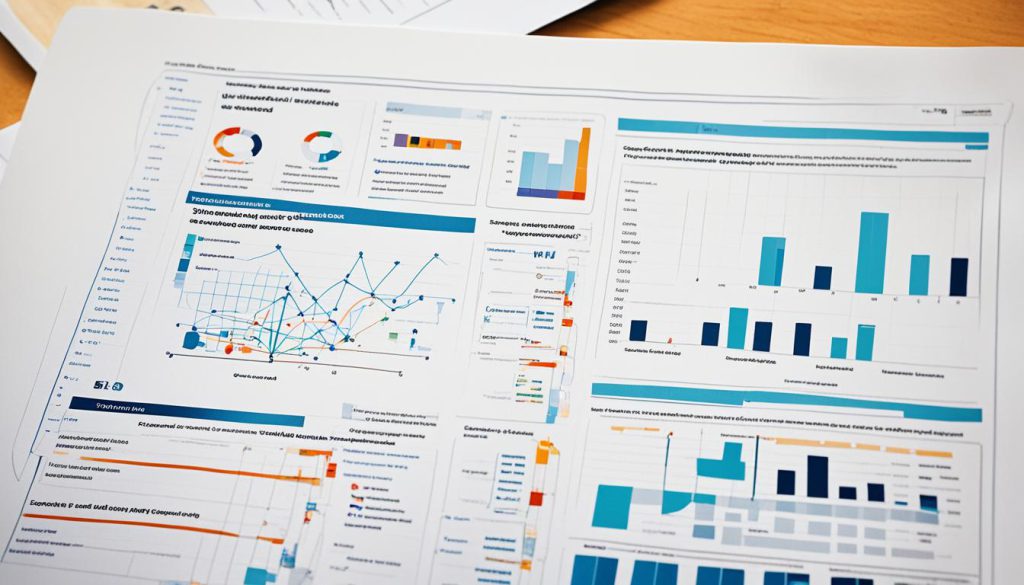Ever wondered why your perfect dating profile doesn’t guarantee love? Samantha Joel’s study puts common beliefs about love to the test.
I’m fascinated by what makes human connections tick. Recent trends in behavioral research and psychology research show it’s not simple. Let’s dive into the fresh insights from sociological studies. They question our usual ideas about relationships.
The discoveries in cognitive behavior analysis and behavioral science research are intriguing. We have a lot of data but predicting happiness is still hard. This shows how complex and unpredictable love can be.
Key Takeaways
- Large-scale data challenges older methods of predicting relationship satisfaction.
- Personal traits may have a more significant impact on happiness than demographic matchings.
- Online dating metrics, such as attractiveness, fail to account for long-term connection success.
- The intersection of behavioral research and artificial intelligence offers new avenues for understanding human connections.
- Computational social science is reshaping how we analyze data in relationship studies.
- Understanding current dating trends can inform better approaches to creating meaningful connections.
The Psychology of Political Discussions in Dating
In exploring how politics plays into dating, I’ve found interesting ways we bond socially. Research shows human connections in dating are complex. Political talks between strangers can lead to surprising positivity and teach us about ourselves.
Underestimating Social Connections Over Contentious Issues
Research involving surveys has revealed something unexpected. People tend to see political talks as divisive. But a study with 471 people showed they often miss out on connections because they avoid these talks. It seems our assumptions might stop us from having deep conversations with potential dates.
Interpersonal Space and Familiar Faces: How We Connect
Studies explore how familiarity influences our interactions. We react differently to people we know than to strangers. And a study of 198 people highlighted we often don’t realize how positive our talks can be, whether we agree or not.
Social Media Conversations: Reflecting Timeless Dynamics
Research into social media shows some consistent patterns of interaction. My work confirms that, even online, the essence of dialogue stays the same. A study with 240 people found real conversations are more beneficial than posting without interaction.
Despite politics being tricky in dating, it often leads to positive outcomes. Few people report bad experiences after these discussions. Our research encourages us to give open talks a chance. It could help us build stronger connections.
Behavioral Research in the Digital Domain
In the busy world of digital connections, my research looks into how certain factors change behavior. This leads to important findings for digital dating. Using quantitative research methods, it’s amazing to see how quick swipes can turn into deep bonds. The mix of technology and human touch shows us how online interactions affect real-life relationships.
We see this in health risk behaviors connected to chronic illnesses and cancer within digital dating. For example, can a photo or sentence about someone’s lifestyle predict their dating success? Questions like these about alcohol use, smoking, and obesity make me want to explore more. Especially when considering the role of digital health data in understanding online behavior.
My smartphones and wearable devices become more than just gadgets. They track sleep, movement, and social interactions, offering rich data for study. The field of behavioral science pulls from many areas like anthropology, psychology, and sociology. These disciplines help us make sense of the data we’re getting from our devices.

It makes you think if we’re simplifying complex human behavior too much. Or, we might be on the edge of discoveries where AI can help us learn more about ourselves. The use of artificial intelligence in our studies doesn’t just make research better. It changes how we understand behavior in business, health, and beyond.
Let’s look ahead. Digital technologies give us new insights into human behavior. They show us everything from the quick decision of a swipe to lasting love. These insights are key to the future of our online world.
The Nutritional Aspects of Attraction
Recent behavioral science research has uncovered interesting connections between nutrition and attraction. It shows that what we eat may affect how attractive we seem to others. This link is key for sociological studies and psychology research. They aim to deeply understand human behavior in choosing partners.
Is There a Link Between Carbs and Attractiveness?
Science hints that our diet, specifically carbs, might influence how others see us. Researchers have found a link between eating refined carbs and looking more attractive. This idea suggests how our food choices could shape our social and love lives.
Understanding Habituation in Animal Signals and Mate Selection
In the animal world, psychology research explores how animals pick mates based on signals. This involves neural adaptation and gives hints about how mate choice has evolved. It looks at the brain processes behind these decisions.
Could humans be similar, with preferences shaped by what we’re used to? This question is at the forefront of exploring how diet, looks, and biology connect.
The concept of assortative mating is intriguing when examining human relationships. It refers to people often choosing partners who are like themselves in various ways. See the table below for how certain traits relate in partners:
| Trait | Positive Correlation | Example Correlation Coefficient | Negative Correlation |
|---|---|---|---|
| Political/Religious Attitudes | High | .58 | – |
| Substance Use Habits | Yes | – | – |
| Personality Traits (e.g., Neuroticism) | Moderate | .11 | – |
| Extroversion | No Significant | – | – |
| Chronotype, Tendency to Worry | – | – | Rare |
| Birth Year | Highest | – | – |
These patterns hint at deeper psychological and cultural factors. While we often pick partners like us, there are some exceptions. These rare cases give insight into the complexity of choosing a mate.
This complex blend of preference, choice, and genetics makes our social bonds fascinating. More research can help unravel how surprising factors like our diets influence attraction.
Modern Relationship Maintenance and Behavioral Analysis
In today’s relationships, the use of cognitive behavior analysis, behavioral research, and psychology research is key. They help us understand relationship satisfaction and mental health. As someone who studies modern love, I’ve learned how behaviors and emotions work together.

Marital Harmony and Its Significant Impact on Mental Health
Marital harmony does more than bring joy. It is crucial for well-being. About ten percent of mental health may depend on stable relationships.
Happy relationships can lead to better mental health. This shows how important it is to build positive connections.
Dissecting Emotional Responses: The Neurological Imprint of Love
Love becomes clearer under behavioral research. Our feelings can leave a lasting mark on our brains. This suggests that deep emotions might change our brains in long-lasting ways.
Preconceptions vs. Actual Perceptions in Online Dating Personas
Online dating shows a big gap between how we see ourselves and how others see us. Social media can present an idealized version of us. This leads to misunderstandings about who we truly are.
| Behavioral Technique | Application in Relationships |
|---|---|
| Applied Behavior Analysis (ABA) | Enhanced communication, improved social skills in specialized contexts |
| Antecedent Modification | Addressing triggers for conflict to promote positive behavioral change |
| Prompting and Shaping | Encouraging supportive behaviors that foster closeness and understanding |
| Chaining | Establishing a series of actions that lead to desired outcomes within the relationship |
Behavior Analysts focus on using these methods in various settings. They help those with Autism Spectrum Disorder (ASD) and in everyday relationships. The goal is using behavioral research principles to make relationships last.
Working together across different fields is now a big focus. It’s all about finding the best strategies. We seek to maintain the quality of different treatment options.
Conclusion
My journey through behavioral research revealed how complex our social interactions are. I found that the way people connect, especially in dating, is intricate. Psychology research has shown how politics, personal space, and social media affect us.
It’s clear that many factors influence our social bonds. Studies on diet and attraction, and how we maintain relationships, show our connections are complex. Insights from behavioral science research about love’s brain activity offer new ways to strengthen our emotional ties.
Continued research in behavior sciences is vital. It helps us understand ourselves and others better, leading to healthier relationships. Keeping up with psychology research can make our relationships stronger and more adaptable to today’s challenges.
Source Links
- https://www.wired.com/story/data-marriage-behavior-love-psychology-romance/
- https://www.pewresearch.org/social-trends/2020/08/20/nearly-half-of-u-s-adults-say-dating-has-gotten-harder-for-most-people-in-the-last-10-years/
- https://www.nature.com/articles/s41562-021-01275-6
- https://www.psypost.org/discussing-political-disagreements-with-strangers-is-often-surprisingly-positive-study-finds/
- https://www.nature.com/articles/s41386-020-0761-5
- https://en.wikipedia.org/wiki/Behavioural_sciences
- https://www.sciencedaily.com/releases/2023/09/230905124922.htm
- https://www.frontiersin.org/journals/psychology/articles/10.3389/fpsyg.2020.01919/full
- https://www.verywellmind.com/what-is-behavior-analysis-2794865
- https://www.ncbi.nlm.nih.gov/pmc/articles/PMC5048245/
- https://www.nhtsa.gov/behavioral-research
- https://www.uspreventiveservicestaskforce.org/uspstf/about-uspstf/methods-and-processes/behavioral-counseling-research-and-evidence-based-practice-recommendations-us-preventive-services-task-force-perspectives

